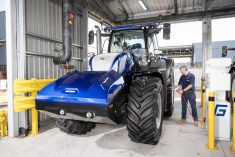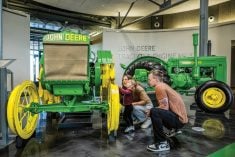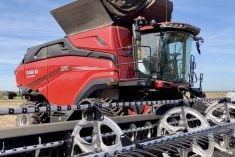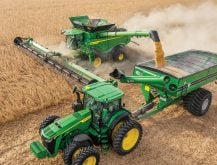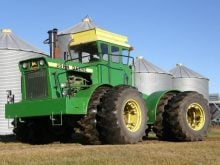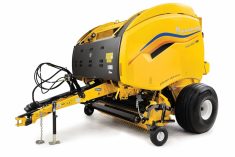The new powered farm machines parked on dealership lots in the coming decade are going to look a little different than they do now — at least under the hoods.
That’s according to information released recently by two of the major manufacturers, John Deere and CNH Industrial, parent company to Case IH and New Holland.
The largest player in the ag equipment market, John Deere, revealed it had some big plans in store for incorporating yet more advanced tech into its equipment in the not-too-distant future.
Read Also
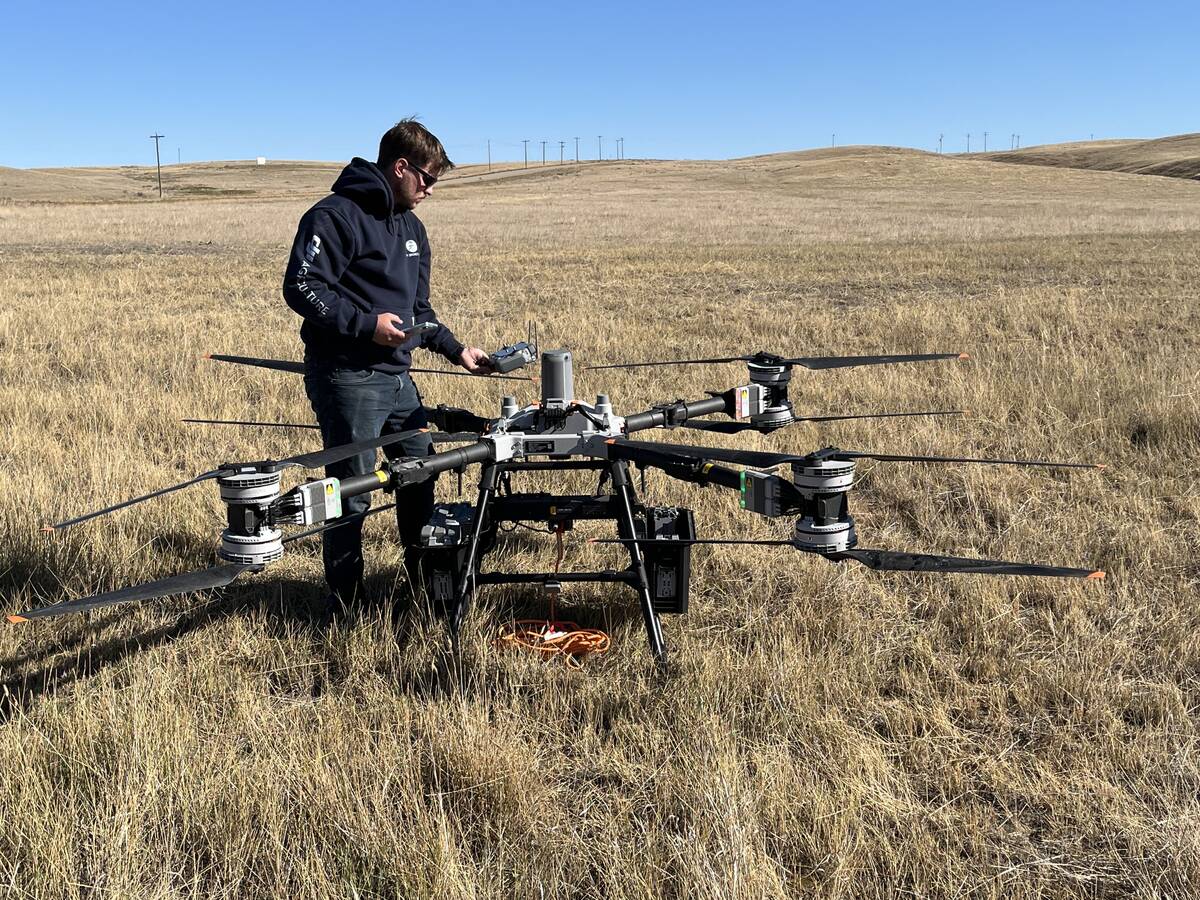
Farm-facing drone does the heavy lifting
Canadian distributor DJI Agriculture unveils its AGRAS T100 drone to western Canada’s producers for greater efficiencies in spraying and granular spreading in fields.
As far back as its 2021 sustainability report, the green brand laid out a timeline for adding not just more and better precision ag features, but also electric and hybrid powertrain options for some equipment lines, as part of Deere’s “Smart Industrial Strategy.”
That strategy, among other things, focuses on “delivering intelligent, connected machines and applications that will revolutionize production systems in agriculture and construction, unlocking customer economic value across the lifecycle in ways that are more sustainable for all,” the 2021 sustainability report explains.
So we can expect 2026 to be a milestone year for Deere, because that’s the deadline the company has set for itself to introduce some of those new technologies.
Deere says large-scale producers are today using advanced precision ag systems and equipment monitored through the John Deere Operations Centre on about 315 million acres globally — almost twice the total farmed area in Canada.
The company says it wants to see that use of precision ag equipment and data collection increase to encompass 500 million acres by the deadline.
The brand hasn’t focused only on large producers, though. By 2026 it expects to ensure all small ag equipment is capable of advanced connectivity as well, and to offer electric drive in compact utility tractors as well as in its turf equipment line by that date, too.
Deere said it will also offer a fully autonomous electric ag tractor by 2026 but hasn’t given details on what horsepower or specifications it will have. In its construction equipment division, 2026 will also see more than 20 electric and hybrid-electric machines hit the market.
Indoor use
CNH has indicated it, too, will soon offer improved precision ag features and electric drive equipment.
“Sustainability is something our customers, their customers and the planet are demanding,” said Selin Tur, VP of advanced technologies and innovations at CNH, in a presentation during an information day for corporate investors in Florida in late February.
“But this is not only about sustainability, next-generation products (with electric drives) deliver a better user experience, reduced noise, better traction, driving and working features. Controls and automation are more responsive.”
Addition of electric drives will open up new uses for some machines, such as allowing prolonged indoor use in greenhouses. And the brand sees that as an opportunity for increased sales. Overall operating costs of electric machines are expected to be lower, requiring less maintenance.

Of course, battery electric-drive machines will have limited applications. At least for now, very high horsepower tractors aren’t a good fit for that technology. But where it does work, adding electric-drive machines will help manufacturers and producers prepare for the possibility of further increases in global emissions regulations.
Even on more conventional diesel-powered machines, electrification of implement drives could see fairly widespread adoption. Tur notes that PTO and hydraulic systems are areas where electric drives could — and probably soon will — improve tractor performance.
“In agriculture and construction, electrification involves far more than propulsion,” she said. “Our challenge involves improving total vehicle efficiency. Electrification improves all of this.”
She cites the example of the brand’s electrically driven pull-type sprayer, currently in development. Powering it has been shown to greatly reduce tractor fuel consumption and emissions compared to using regular PTO and hydraulics.
This sprayer and other electric-drive implements could soon see commercial market release. Tur describes them as “in the works.”
In construction equipment, electrification also allows for reducing the size of those machines, giving them better access to difficult areas without reducing power. And according to Tur, diesel-electric hybridization increases the power-to-weight ratio of ag tractors. There are also plans for their introduction, she said.
In August, both CNH brands, New Holland and Case IH, launched their first electric utility tractor models, the NH T4 Electric and Farmall 75C Electric, respectively.
“With regards to full electrification,” Tur said back in February, “we will launch our first battery-electric tractor in partnership with Monarch. Following that we will continue to expand our BEV (battery electric vehicle) range — as well as expand our electric construction offerings.”
So expect to see more alternative-drive equipment follow beyond the release of those two battery electric tractors.




